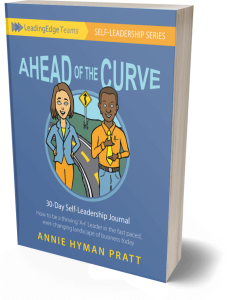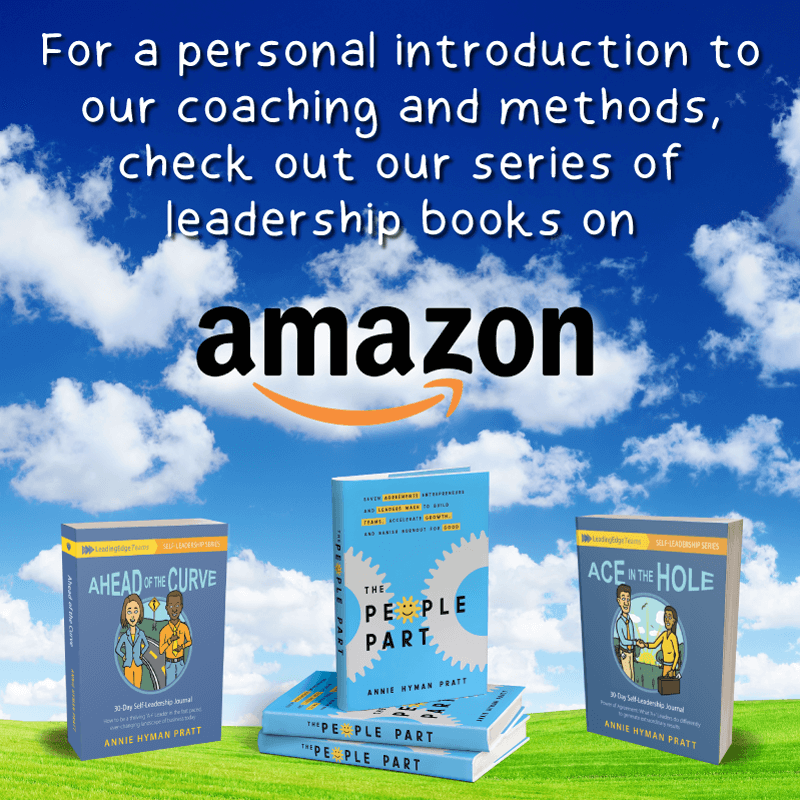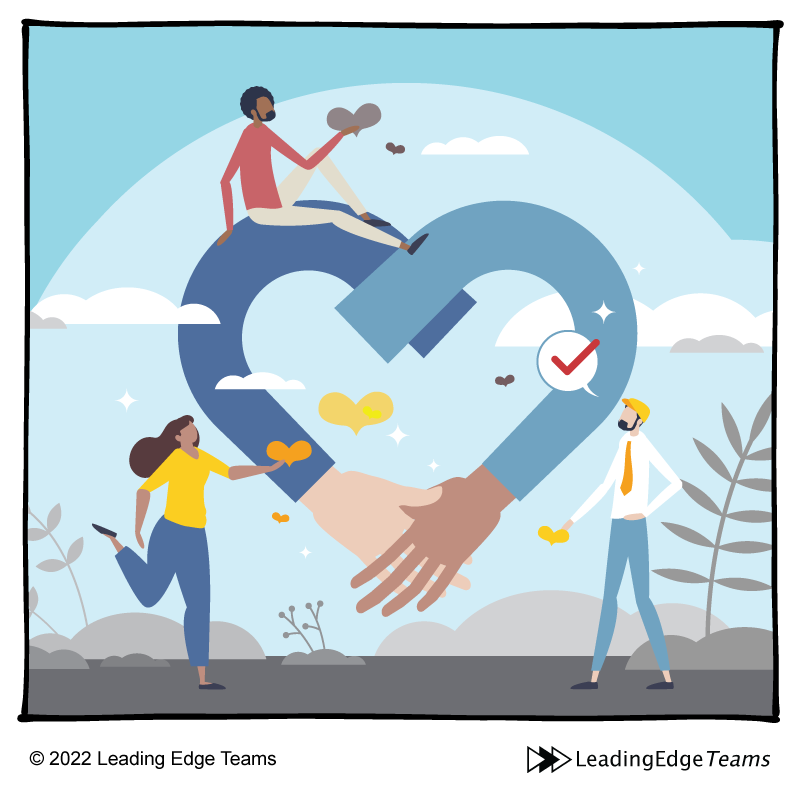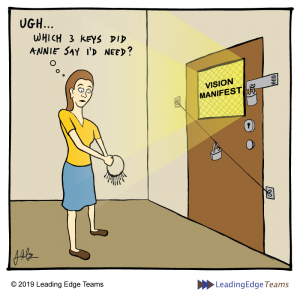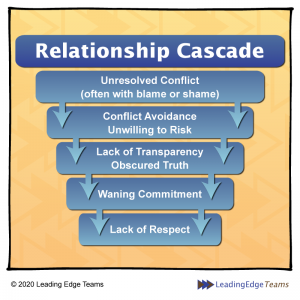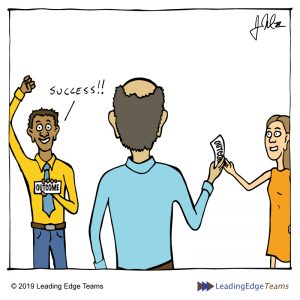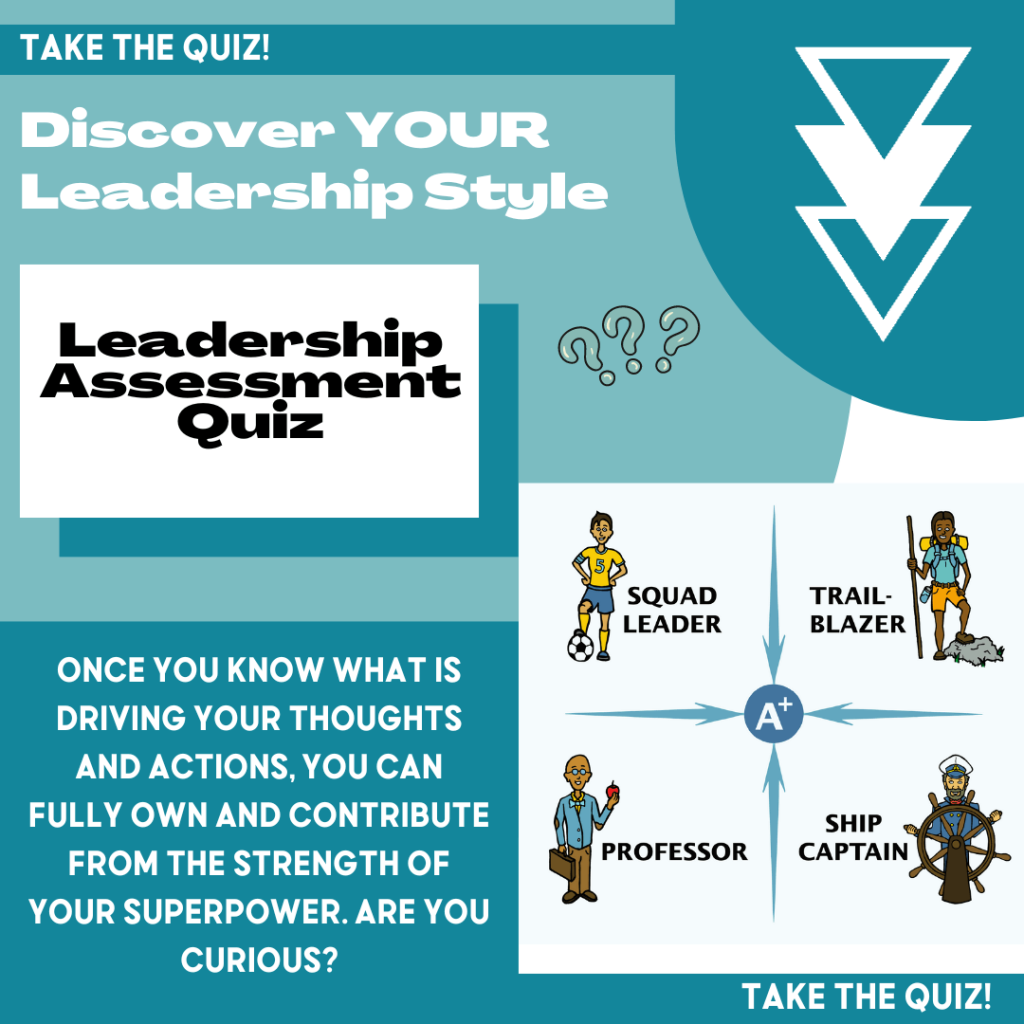As human beings we don’t have control of what happens, but we (almost) always have a choice in how we respond. As a leader, making choices from Self-Leadership ensures that you can navigate challenges and find the best way forward. It also enables you to create psychological safety and build secure working relationships. However, it does not mean that all your team members are going to feel good all the time, you must help expand their zone of emotional endurance.

Psychological Safety
When it comes to psychological safety, the most common misconception by far is thinking that it’s about making people “comfortable.” Let’s be clear: Total safety and comfort in business isn’t possible (or even desirable). Instead, business inherently faces challenge, loss, and problems. To achieve lasting success, companies need to endure the tough stuff and grow despite the difficulties—which means that people need to not just survive but thrive, even when they’re experiencing stress, challenge, and change.
When we say that team members need psychological safety to do their best work, that doesn’t mean they need to feel good, comfortable, or at ease all the time. Rather, we want our team members to feel psychologically safe enough—enough to endure the inevitable discomfort they’ll experience and stay anchored in Self-Leadership so they can use their thinking brain to problem-solve, as well as step up to taking on greater responsibility and risk.
Emotional Endurance
Trying new things is inherently uncomfortable. Often as humans we stick with behavior that’s familiar, even if we suspect it will not get the best results, because at least we have relative certainty—we know we didn’t die the last time we behaved that way. To be a part of a business that remains relevant, you need to know how to innovate with your team. Innovation sounds exciting, right? It is! But being effective at leading innovation means that you have to master your ability to spend a lot of time in discomfort, and make it safe for your team to be in discomfort right alongside you. I’ve made a model to illustrate this delicate balance between being totally at ease and being totally overwhelmed—a zone in which we’re uncomfortable but still able to think clearly and take calculated risks, despite feeling fear and/or discomfort. This is how we learn and grow. Take a look at the graphic below to see how I think of it visually.
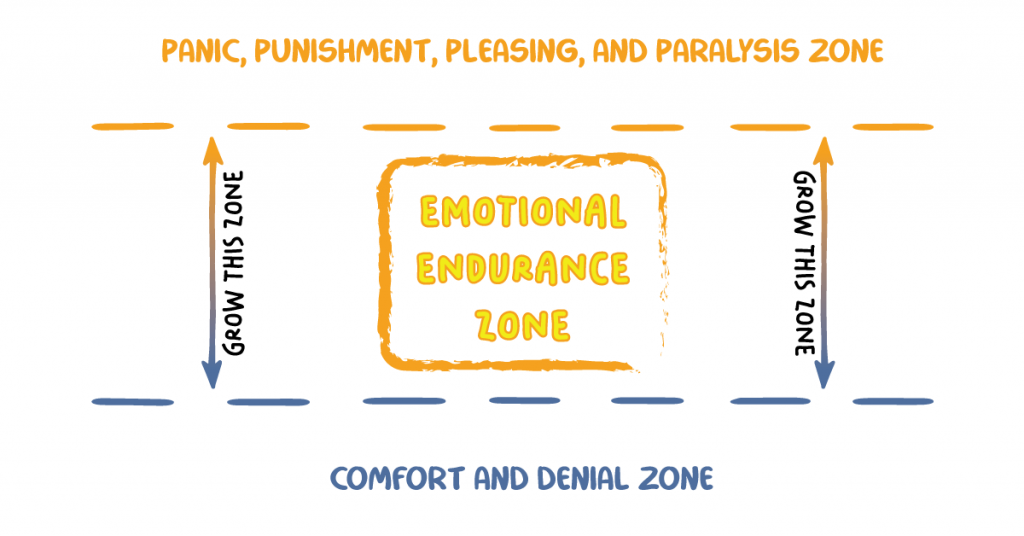
The top zone is where you succumb to emotional reactivity: the panic, punishment, pleasing, and paralysis zone. Different people experience this differently. For some, extreme stress comes across as highly punishing; they think, This is just too much, I can’t take it, it’s not worth it, I have to take a day off. Others respond to extreme stress with panic, unable to be still or control their racing minds, which leads them to speak every irrational thought and every difficult feeling, including anger, out loud. They’ll say things like “I can’t believe this happened. I’m so upset! How did you mess this up?” while frantically putting notes and reminders in their phone. Still others become paralyzed, frozen in overwhelm or fear. They’re often on the receiving end of someone yelling, “Gosh darn it—do something!” And some even go into appeasing behaviors, where they will say and do anything to reduce tension and avoid conflict, even if that involves lying, evasion, or manipulation. Such as “I’m sure I can get this solved before tomorrow”—when everyone who’s in their right mind knows that’s not possible.
The bottom zone represents comfort and (sometimes) denial. Unlike the top zone, this zone can actually have a productive use. We can’t spend our entire lives with tension and stress present in every moment, so the comfort zone is where we recharge our batteries so we can face challenges later. This is the zone where we may busy ourselves with data entry or cleaning up our e-mail inbox, and it helps us cool down after a challenging workday (or week!). But you can indeed have too much of a good thing, and staying in this zone as a way to avoid facing issues (or deny they even exist) guarantees that there’s no growth or learning going on. You’re avoiding the stress of being challenged, sure, but you’re also denying yourself opportunities for both you and the business to improve!
The middle zone is where you are at your most productive. In this zone, you are psychologically safe and secure enough to meet challenges, take deliberate risks, learn new things, and, yes, innovate—even though you’re uncomfortable, doing things you haven’t done before or stretching your capabilities beyond where you’re confident in your own performance. You may even be experiencing pain, fear, frustration, or any number of emotions; however, these emotions don’t control your behavior—you perform well even while experiencing some discomfort of negative emotions. And as you spend time in this zone, you’ll function better and better in it. Imagine you’re about to present a new idea, suggest a solution to a tricky problem, or have a potentially difficult conversation with a team member. You aren’t 100 percent sure of the outcome and it’s a bit nerve-racking, but you feel safe enough to give it a try. Once you make it through in one piece—even if the outcome isn’t exactly what you hoped—you’ll feel confident to do it (and other tough stuff!) again. Every time you reap the rewards of taking a risk, you grow your confidence and competence and “level up” your work.
I refer to this as building your emotional endurance—an element of Self-Leadership—and it is a key competency for team members and leaders alike.
To learn more about psychological safety and Self-Leadership, pick up a copy of my book The People Part: Seven Agreements Entrepreneurs and Leaders Make to Build Teams, Accelerate Growth, and Banish Burnout for Good. (See Below)
Warmly,
Annie


